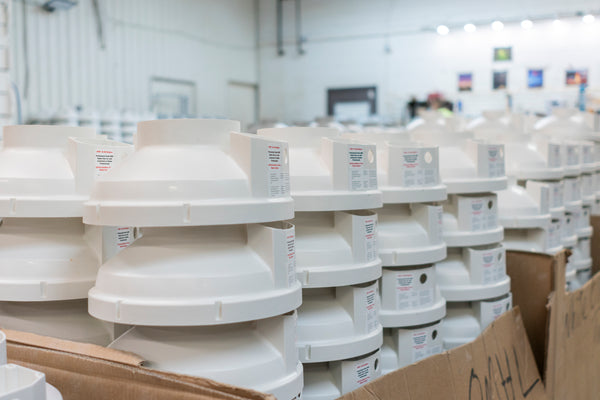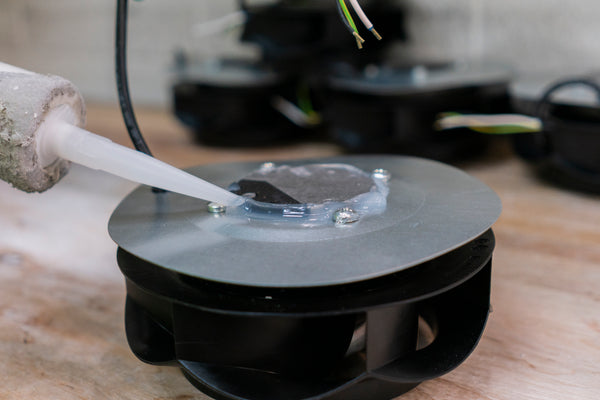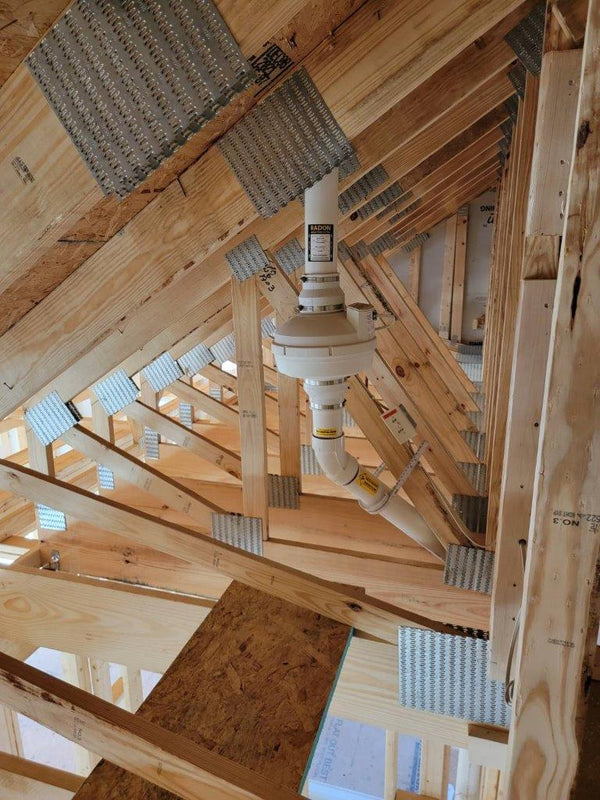
Can You Soundproof Your Radon Fan System?
If you have installed a radon mitigation system in your home, you know that the constant hum, rattle, or whoosh from the fan can be anything but peaceful. This unpleasant stream of noise leads many people to wonder if they can soundproof a radon fan system.
The short answer is yes. In fact, you can follow several strategies to lower the noise your system makes. This blog covers how radon mitigation systems work and why fans can be noisy and provides soundproofing methods. We’ll also share tips for long-term maintenance and what to expect after soundproofing.
The Essential Components of a Radon Mitigation System
Every radon mitigation system has parts that work together to keep indoor air safe:
- PVC piping establishes a suction point that directs radon gas from beneath your home outdoors.
- The radon fan creates a vacuum while increasing airflow below your home’s foundation.
- Seals around foundation cracks or sump pits prevent radon-laden air from sneaking in at unwanted locations.
- The exhaust vent directs radon gas above the roof and away from your home.
The Noise Factor: Why Radon Fans Can Be Noisy
For the radon system to work, the radon fan motor must run all day, every day. Vibrations from the motor can transmit through the mounting structure and pipes, which can create an unpleasant humming or buzzing sound. Luckily, this only happens if the piping touches a wall or beam within your home, and it’s easy to fix.
In addition, air rushing through pipes at high speeds can produce a steady whooshing noise, especially in small homes with straight pipe runs. The sound of airflow is a normal part of radon fan operation, especially with a system that has a high-performance fan. However, if the fan suddenly becomes noisy, it’s a sign that the bearings in the motor have gone bad and it’s time for a fan replacement.
How Noise Affects Homeowners
Noise from a radon system can interrupt sleep, disrupt a quiet home office, or cause daily annoyance. Homeowners might begin feeling frustrated with the constant background noise, especially if the fan sits in the attic or directly outside of a living area.

5 Methods To Soundproof Your Radon Fan System
If you want to know how to soundproof your radon fan system, determine what’s causing the sound and tackle it on multiple fronts. Here are five potential solutions.
1. Use Soft Fernco Couplings
One of the easiest ways to reduce vibration noise involves using soft couplings (flexible rubber connectors) between the PVC pipes and the fan. These couplings act as shock absorbers, so less vibration travels along piping and into walls or floors.
2. Apply Sound Dampening Materials
Acoustic foam or rubber mats wrapped around the system’s PVC pipes or placed between the mounting brackets and the pipes can reduce the intensity of structure-borne noise. However, you should never wrap or insulate the radon fan itself because it can lead to overheating and system failure.
3. Attach Mufflers and Noise Suppressors
While some white noise is normal, it’s important to note that the frequency of the noise rather than the decibels is usually to blame. Radon fan manufacturers offer mufflers, noise suppressors, or system noise reducers to reduce noise in radon mitigation systems. These cylinders attach to the exhaust side of the fan and typically feature a layer of foam within a PVC pipe.
The Diamond Muffler is an innovative, noise-reducing product that uses acoustic foam to alter the frequency of the noise. This change in pitch makes the fan seem quieter without impacting the effectiveness of the radon system.
4. Reconsider the Fan Placement
Where you install the fan matters a great deal. Positioning the fan on the exterior of your home will make the noise less noticeable inside. You can also install a radon fan cover box to insulate the fan and protect it from the elements.
When routing pipes from the basement to the attic, for example, install pipes in a hall closet rather than a bedroom closet. This will prevent system noise from disrupting your living space.
5. Upgrade to a Quieter Fan
Radon fan technology has improved a lot in recent years. Electronically commutated (EC) fans run more quietly and efficiently than AC fans. Upgrading to an EC fan can make a difference if your current model is several years old or if the noise level is a top concern.
Step-by-Step Guide to Soundproofing
Assessing Your Current System
Start by identifying the source of the noise. Is it a loud motor? Do you hear vibrations humming through the walls? Walk around your radon system while it runs, and note if touching certain pipes or brackets dampens the noise.
Gathering Materials and Tools
- Tape measure
- Screwdriver
- Acoustic foam or mass-loaded vinyl
- Rubber mounting pads
- PVC cement (for resealing pipes)
- Flexible Fernco couplings
- Radon fan muffler or noise suppressor
- Replacement radon fan (if you’re upgrading)
Implementing Soundproofing Techniques
- Before working on the mitigation system, turn off the power to your radon fan for safety.
- If vibration is an issue, place rubber mounting pads where the fan connects to a wall or support beam.
- Always install radon fan noise suppressors according to the manufacturer’s directions.
- If relocating the fan is possible, install it outside or in an unoccupied area of your home to stick with local building codes.
Testing the Results
Once you’ve added soundproofing, restore power and listen carefully. Walk through rooms adjacent to the radon system, and note the changes in noisiness. Has the noise level dropped? Since frequency is more of a concern than decibels, use a frequency meter app to compare before-and-after readings to quantify the difference.

DIY vs. Professional Installation
Considerations for DIY
DIY soundproofing appeals to homeowners who enjoy hands-on projects and want to save money. You’ll learn a lot about your system and have the flexibility to tweak things as needed. However, keep in mind that air leaks can reduce the effectiveness of radon mitigation and potentially compromise your safety. Additionally, not all noise issues have easy fixes; some stem from installation errors or old hardware that require advanced skills to resolve.
When To Hire a Professional
If your system is still noisy after DIY efforts or if you are not confident with home projects, it’s best to call a licensed radon mitigation professional. They can move piping, remount the fan, or swap it for a quieter model quickly and safely. They can also test for optimal system performance after making changes.
A Quieter, Safer Home Awaits
If you were wondering whether you can soundproof your radon fan system, you now know the answer is a resounding yes! With the right approach, your radon mitigation system can continue protecting your household without disrupting the peace.





